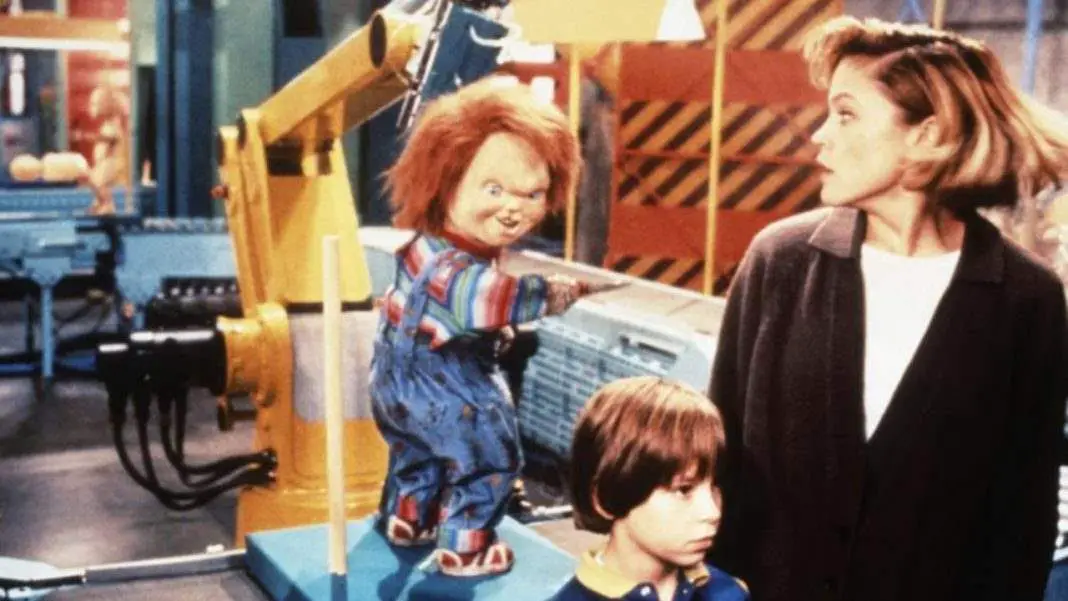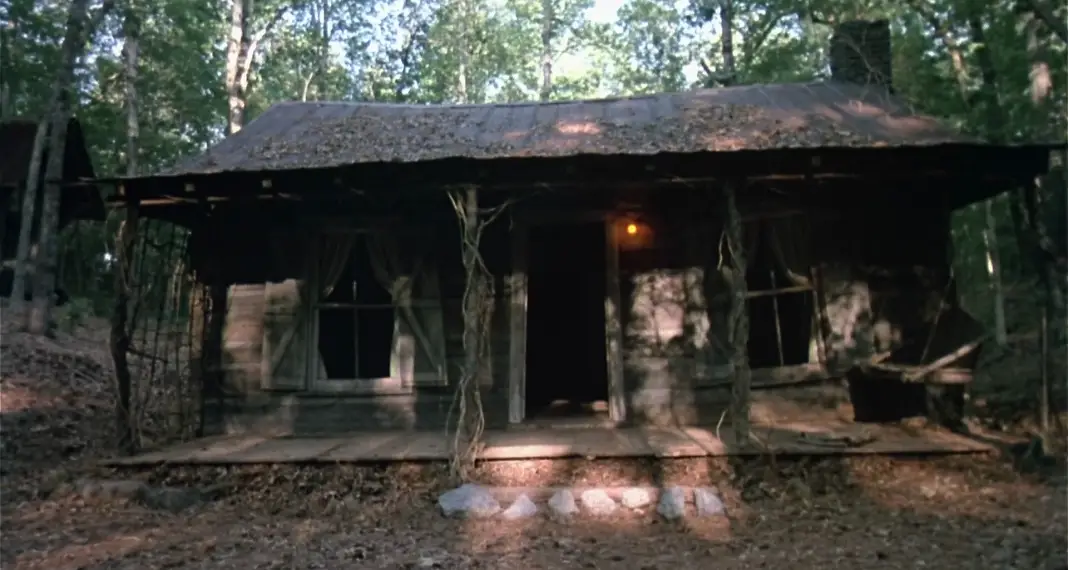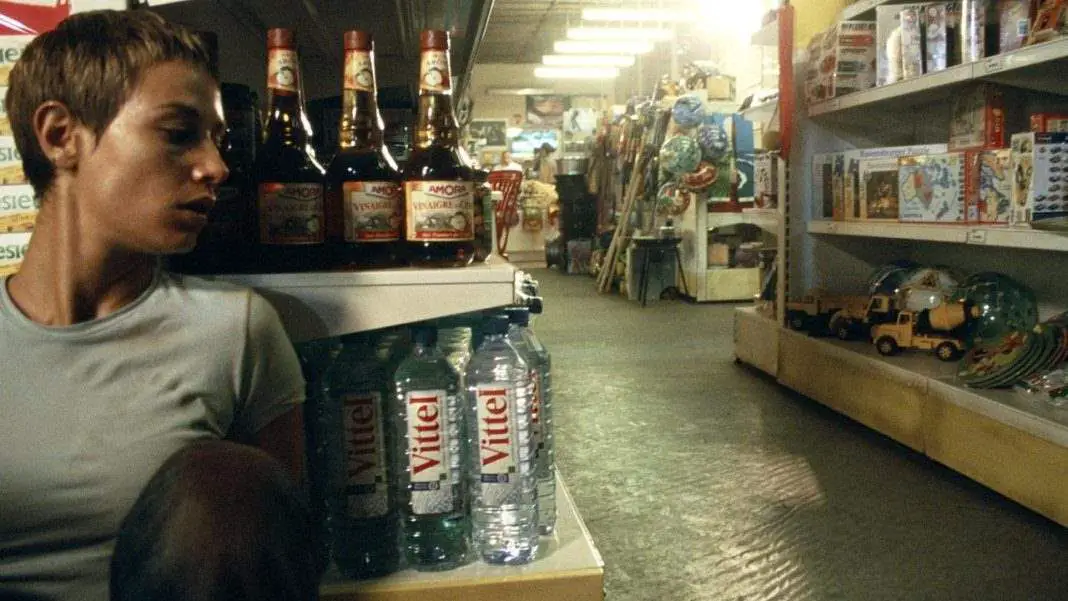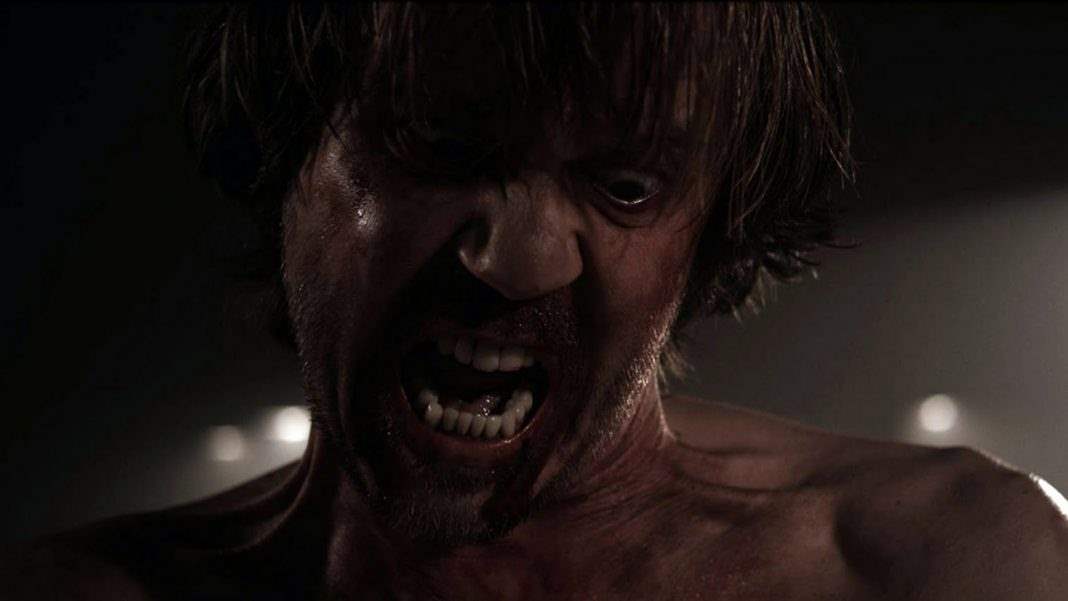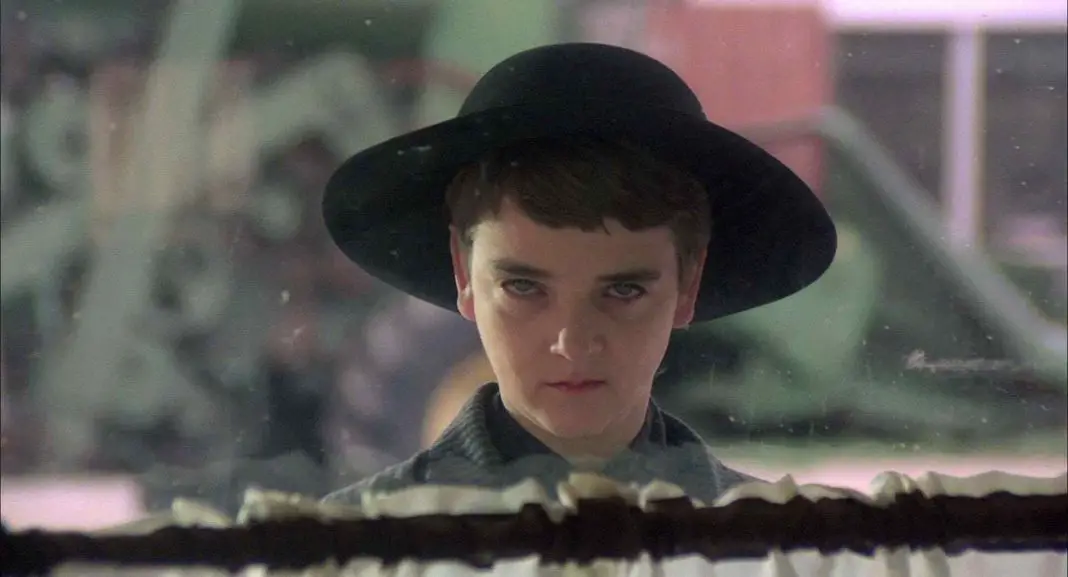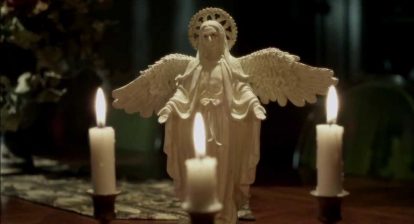Child’s Play is one of the most important, genre-defining horror movies of the late ‘80s. It’s one that everyone remembers and people still really like, but I think a lot of people tend to forget about just how good it actually is. Catherine Hicks and Chris Sarandon both give completely believable performances. It’s drenched in a dingy, realistic Chicago atmosphere that winds up balancing the absurdity of the premise incredibly well. It creates the last of the ‘80s horror icons, a doll that’s bursting with rage and personality but can also be scary when just sitting still. And it works as a genuinely frightening film.
The best thing about Child’s Play is that it holds off on actually showing you Chucky, on showing you any of the great special effects that went into bringing him to life, for the first forty-five-minutes. There’s so much buildup of suspense. The scene in which Chucky comes to life—on camera, at least—for the first time is still shocking and still holds up.
It was just what people needed at a time when mainstream, theatrical horror was getting stale and the video market was booming. People loved it and they wanted more, so of course a sequel was green lit.
The funny thing about that, though, is that Chucky isn’t just killed at the end of the movie, he’s almost completely obliterated. Tom Holland did this specifically to avoid the possibility of a sequel, believing that no one would want one if they saw that the doll was completely demolished. He thought for sure that there would be no way a studio or writer could bring him back from that.
But profit finds a way. It was Don Mancini, original co-writer, who was tasked with bringing this creation back, quickly and efficiently. So he set to work writing Child’s Play 2.
All good horror movies, especially good sequels, take risks. And while Child’s Play 2 is not a better film than the first, I think it is a riskier one. My favorite aspect of this is the shift we get in terms of our main character. While the first focused quite a bit on the relationship between Andy and his malevolent doll, Karen Barclay was our lead. She was the mother at the center of the whole ordeal, just trying to help her son. We were all rooting for her. We want her to save Andy, who is an interesting character, but much of our investment comes from the fact that he is a small child and as a collective audience we just didn’t want to see him get hurt.
Did You Know? Wicked Horror TV Has Classic and Independent Horror Films Available to Stream for Free!

But in Child’s Play 2, Andy is our protagonist. It’s a very simple gear shift, but it’s one that saves the entire feature and turns it into a worthy, effective, and emotional follow-up. Not too much time has passed since the first. Andy is still a kid, but he’s a little older and wiser now. He’s been through things no child should have to experience and he’s legitimately trying to deal with them, in a believable way for his age.
Watching this child who has survived a trauma and had a great relationship with his mother being taken from her and placed into foster care, into the arms of a family who don’t really get or appreciate him, it’s an interesting story even before the vengeful killer doll comes into play. More than that, it’s a type of film that we never get to see from the child’s perspective. Yeah, there are a lot of features about broken families and kids getting placed into foster care, and in almost all of them, the narrative is focused on the parents or the foster parents. The kid, in a lot of these cases, is just ornamentation.
Also See: Why Nica Pierce is the Most Tragic Character in the ‘Child’s Play’ Franchise
So it’s kind of amazing that Child’s Play 2, of all possibilities, gives the focus to the kid. It gives Andy an actual arc. And Alex Vincent, who was still just a kid finding his footing in the first, turns in a great performance.
The foster care aspect also allows a change of setting, which is something the Child’s Play series would wind up doing more than almost any other franchise. We move out of the big city and into the suburbs. This allows the story, while bigger, to feel a little smaller and quieter. But what’s cool is that it’s a deceptive smallness. In focusing on the family drama and Chucky infiltrating Andy’s home and school, what we’re actually doing is saving up for an explosive, over-the-top third act.
The last half hour of Child’s Play 2 gives us one of the best set pieces of any horror sequel, maybe second only to the actual descent into Hell in Hellraiser II. The movie ends where it began—at the doll factory. Andy and his foster sister Kyle—which is a relationship that shouldn’t work but becomes so believably engaging as it goes on—face off against Chucky on, essentially, his home turf. This is kind of the culmination of Andy’s hero’s journey.
He had his mom save him before. He had Detective Norris save him as well. He’s kind of given that role over to Kyle a bit by this point, but now the tables have turned. He has to first save her, and then ultimately save himself. This is Andy’s moment. In these movies, we’re usually so terrified when kids are placed into the action. We don’t want to see any harm come to them, we don’t want to see a child get hurt.
The boldness of Child’s Play 2 is that it’s told, believably, through a child’s perspective. And when Andy gets to that point and actually faces off with Chucky at the end, as much as we don’t want to see him get hurt, we really want to see this kid kick this doll’s ass.
That’s what makes this sequel work as well as it does. It’s a risky move but it pays off in a big way.
